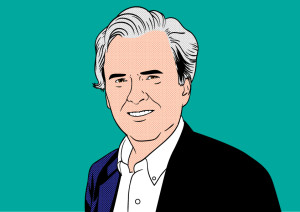Is The Enemy Us? A Credit Union Wakeup Call
By Robert McGarvey
Rob Taylor, CEO of Idaho State Credit Union in Pocatello, Idaho, wants you to know his enemies aren’t big banks – it’s other credit unions.
That’s the provocative point of an op-ed he recently penned for American Banker.
I doubt Taylor will soon get a congratulation bouquet from CUNA, but he just may have a point that many of us ignore the reality that credit unions today are arch competitors with each other.
Wrote Taylor: “The problem with our movement is most of us have been indoctrinated to believe our common enemy are bankers… when in fact the real threat to our future lies within our own industry.”
Believe this: Chase does not care if you thrive. No big bank does. In fact big banks are glad credit unions exist because it lets them say that they welcome small, local institutions. When credit unions move into underserved neighborhoods, probably big banks break out the private reserve brandy to toast their bravery because those banks do not want to be pressured to move back into urban and rural communities they have abandoned. If credit unions are serving those people, hoorah! And pass the brandy.
Sure, community banks – in many cases – actively dislike credit unions and vice versa but they are both squabbling over table scraps that have fallen to the floor.
While the big banks get bigger.
Back up a step. What’s the most competitive vertical in the credit union business? The clear winner are the military themed credit unions and in that sector there are two of the nation’s very biggest credit unions. I count four in the top 20. But a few years ago I tried, and failed, to get on the record sources to talk about competition amongst military credit unions for a proposed story for Credit Union Times. The official line is that they don’t compete.
Oorah.
Maybe they even believe it. But myth it is.
Wrote Taylor: “[S]ince HR 1151 was signed into law by President Clinton in 1998, large, multiple common bond credit unions have continued to get larger by expanding their fields of membership, sometimes overlapping in predatory ways to the detriment to smaller credit unions that have stayed true to their original fields of membership.”
Years ago, FOMs were well defined and narrow. A credit union served only New York Times employees, or maybe only employees of AT&T. I personally belong to that former AT&T credit union – Affinity Federal – and its field of membership is far broader than it once was. Indeed, Affinity on its website headlines: “Almost anyone can join.” That’s because dozens of organizations are in its FOM and if that’s not good enough, Affinity notes: “Don’t see your organization? No worries! You can become a member of the New Jersey Coalition for Financial Education by making a $5 donation when you fill out your online application.”
I’m not dissing Affinity. I’m a happy member. But the broadening of FOMs leads – pretty much instantly – to competition among credit unions for those among us who are fans of the credit union model.
In Arizona, where I now live, Desert Financial – nee Desert Schools – proclaims that anyone who lives, works, worships, or goes to school in Maricopa, Gila, or Pinal counties can join. Maricopa – Phoenix – has around 4 million people, more than half the state’s total population. That credit union is in sharp competition with every other credit union in Phoenix and that is fact.
Back to Taylor. He wrote that his institution just does not compete with Idaho’s biggest banks. As far as competition with credit unions, it’s a different story. Taylor elaborated: “The largest bank headquartered in… Idaho holds $1.3 billion in assets, which is less than half the size of the largest credit union based here. This bank has never been in direct competition with my credit union for consumer loans or deposits, even though we have branches in the same cities.”
He went on: “However, every day we compete vigorously with the aforementioned credit union for consumer deposits and loans from overlapping members.”
Then Taylor tossed out his spitball: “Now, here is where it’s going to get ugly for me and where I lose friends. I agree with Sen. Hatch that many larger credit unions operate in the same manner as taxable banks, and I believe it’s time for them to convert to bank charters and be taxed like the ‘big boys,’ because the credit union movement doesn’t need them. We stopped being a movement and became an industry when HR 1151 was signed into law. “
Wow.
Agree with Taylor or not, he deserves a round of applause. He has put on the table the topic nobody wants to discuss. Do credit unions compete with each other? Of course they do. Is this hurting small credit unions? Of course it does.
Discussing just these topics needs to happen and soon. Because just maybe we have seen the enemy and he is us.
